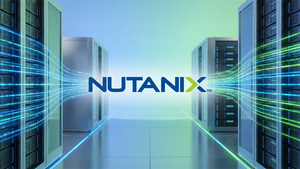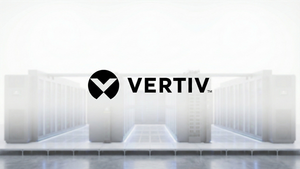
Ho Chi Minh City (HCMC) is embarking on an ambitious journey to transform itself into a powerhouse for Artificial Intelligence (AI) and semiconductor development, a strategic pivot poised to reshape the technological landscape of Southeast Asia. This bold initiative, backed by substantial government investment and critical international partnerships, signifies Vietnam's intent to move beyond manufacturing and into high-value innovation. The city's comprehensive strategy focuses intensely on cultivating a highly skilled engineering workforce and fostering a robust research and development (R&D) ecosystem, setting the stage for a new era of technological leadership in the region.
This strategic bet is not merely aspirational; it is a meticulously planned blueprint with concrete targets extending to 2045. As of October 9, 2025, HCMC is actively implementing programs designed to attract top-tier talent, establish world-class R&D centers, and integrate its burgeoning tech sector into global supply chains. The immediate significance lies in the potential for HCMC to become a crucial node in the global semiconductor and AI industries, offering an alternative and complementary hub to existing centers, while simultaneously driving significant economic growth and technological advancement within Vietnam.
Unpacking HCMC's High-Tech Blueprint: From Talent Nurturing to R&D Apex
HCMC's strategic blueprint is characterized by a multi-pronged approach to cultivate a thriving AI and semiconductor ecosystem. At its core is an aggressive talent development program, aiming to train at least 9,000 university-level engineers for the semiconductor industry by 2030. This encompasses not only integrated circuit (IC) design but also crucial adjacent fields such as AI, big data, cybersecurity, and blockchain. Nationally, Vietnam envisions training 50,000 semiconductor engineers by 2030, and an impressive 100,000 engineers across AI and semiconductor fields in the coming years, underscoring the scale of this human capital investment.
To achieve these ambitious targets, HCMC is investing heavily in specialized training programs. The Saigon Hi-Tech Park (SHTP) Training Center is being upgraded to an internationally standardized facility, equipped with advanced laboratories, workshops, and computer rooms. This hands-on approach is complemented by robust university-industry collaborations, with local universities and colleges expanding their semiconductor-related curricula. Furthermore, global tech giants are directly involved: Advanced Micro Devices, Inc. (NASDAQ: AMD) is coordinating intensive training courses in AI, microchip design, and semiconductor technology, while Intel Corporation (NASDAQ: INTC) is partnering with HCMC to launch an AI workforce training program targeting public officials and early-career professionals.
Beyond talent, HCMC is committed to fostering a vibrant R&D environment. The city plans to establish at least one international-standard R&D center by 2030 and aims for at least five internationally recognized Centers of Excellence (CoE) in critical technology fields. The SHTP is prioritizing the completion of R&D infrastructure for semiconductor chips, specifically focusing on packaging and testing facilities. A national-level shared semiconductor laboratory at Vietnam National University – HCMC is also underway, poised to enhance research capacity and accelerate product testing. By 2030, HCMC aims to allocate 2% of its Gross Regional Domestic Product (GRDP) to R&D, a significant increase that highlights its dedication to innovation.
This concerted effort distinguishes HCMC's strategy from mere industrial expansion. It's a holistic ecosystem play, integrating education, research, and industry to create a self-sustaining innovation hub. Initial reactions from the AI research community and industry experts have been largely positive, recognizing Vietnam's strong potential due to its large, young, and increasingly educated workforce, coupled with proactive government policies. The emphasis on both AI and semiconductors also reflects a forward-thinking approach, acknowledging the intertwined nature of these two critical technologies in driving future innovation.
Reshaping the Competitive Landscape: Opportunities and Disruptions
Ho Chi Minh City's aggressive push into AI and semiconductor development stands to significantly impact a wide array of AI companies, tech giants, and startups globally. Companies with existing manufacturing or R&D footprints in Vietnam, such as Intel Corporation (NASDAQ: INTC), which already operates one of its largest global assembly and test facilities in HCMC and recently began producing its advanced 18A chip technology there, are poised to benefit immensely. This strategic alignment could lead to further expansion and deeper integration into the Vietnamese innovation ecosystem, leveraging local talent and government incentives.
Beyond existing players, this development creates fertile ground for new investments and partnerships. Advanced Micro Devices, Inc. (NASDAQ: AMD) has already signed a Memorandum of Understanding (MoU) with HCMC, exploring the establishment of an R&D Centre and supporting policy development. NVIDIA Corporation (NASDAQ: NVDA) is also actively collaborating with the Vietnamese government, signing an AI cooperation agreement to establish an AI research and development center and an AI data center, even exploring shifting part of its manufacturing to Vietnam. These collaborations underscore HCMC's growing appeal as a strategic location for high-tech operations, offering proximity to talent and a supportive regulatory environment.
For smaller AI labs and startups, HCMC presents a compelling new frontier. The availability of a rapidly growing pool of skilled engineers, coupled with dedicated R&D infrastructure and government incentives, could lower operational costs and accelerate innovation. This might lead to a decentralization of AI development, with more startups choosing HCMC as a base, potentially disrupting the dominance of established tech hubs. The focus on generative and agentic AI, as evidenced by Qualcomm Incorporated's (NASDAQ: QCOM) new AI R&D center in Vietnam, indicates a commitment to cutting-edge research that could attract specialized talent and foster groundbreaking applications.
The competitive implications extend to global supply chains. As HCMC strengthens its position in semiconductor design, packaging, and testing, it could offer a more diversified and resilient alternative to existing manufacturing centers, reducing geopolitical risks for tech giants. For companies heavily reliant on AI hardware and software development, HCMC's emergence could mean access to new talent pools, innovative R&D capabilities, and a more competitive landscape for sourcing technology solutions, ultimately driving down costs and accelerating product cycles.
Broader Significance: A New Dawn for Southeast Asian Tech
Ho Chi Minh City's strategic foray into AI and semiconductor development represents a pivotal moment in the broader AI landscape, signaling a significant shift in global technological power. This initiative aligns perfectly with the overarching trend of decentralization in tech innovation, moving beyond traditional hubs in Silicon Valley, Europe, and East Asia. It underscores a growing recognition that diverse talent pools and supportive government policies in emerging economies can foster world-class technological ecosystems.
The impacts of this strategy are multifaceted. Economically, it promises to elevate Vietnam's position in the global value chain, transitioning from a manufacturing-centric economy to one driven by high-tech R&D and intellectual property. Socially, it will create high-skilled jobs, foster a culture of innovation, and potentially improve living standards through technological advancement. Environmentally, the focus on digital and green transformation, with investments like the VND125 billion (approximately US$4.9 million) Digital and Green Transformation Research Center at SHTP, suggests a commitment to sustainable technological growth, a crucial consideration in the face of global climate challenges.
Potential concerns, however, include the significant investment required to sustain this growth, the challenge of rapidly scaling a high-quality engineering workforce, and the need to maintain intellectual property protections in a competitive global environment. The success of HCMC's vision will depend on consistent policy implementation, continued international collaboration, and the ability to adapt to the fast-evolving technological landscape. Nevertheless, comparisons to previous AI milestones and breakthroughs highlight HCMC's proactive approach. Much like how countries like South Korea and Taiwan strategically invested in semiconductors decades ago to become global leaders, HCMC is making a similar long-term bet on the foundational technologies of the 21st century.
This move also has profound geopolitical implications, potentially strengthening Vietnam's strategic importance as a reliable partner in the global tech supply chain. As nations increasingly seek to diversify their technological dependencies, HCMC's emergence as an AI and semiconductor hub offers a compelling alternative, fostering greater resilience and balance in the global technology ecosystem. It's a testament to the idea that innovation can flourish anywhere with the right vision, investment, and human capital.
The Road Ahead: Anticipating Future Milestones and Challenges
Looking ahead, the near-term developments for Ho Chi Minh City's AI and semiconductor ambitions will likely focus on the accelerated establishment of the planned R&D centers and Centers of Excellence, particularly within the Saigon Hi-Tech Park. We can expect to see a rapid expansion of specialized training programs in universities and technical colleges, alongside the rollout of initial cohorts of semiconductor and AI engineers. The operationalization of the national-level shared semiconductor laboratory at Vietnam National University – HCMC will be a critical milestone, enabling advanced research and product testing. Furthermore, more announcements regarding foreign direct investment and partnerships from global tech companies, drawn by the burgeoning ecosystem and attractive incentives, are highly probable in the coming months.
In the long term, the potential applications and use cases stemming from HCMC's strategic bet are vast. A robust local AI and semiconductor industry could fuel innovation in smart cities, advanced manufacturing, healthcare, and autonomous systems. The development of indigenous AI solutions and chip designs could lead to new products and services tailored for the Southeast Asian market and beyond. Experts predict that HCMC could become a key player in niche areas of semiconductor manufacturing, such as advanced packaging and testing, and a significant hub for AI model development and deployment, especially in areas requiring high-performance computing.
However, several challenges need to be addressed. Sustaining the momentum of talent development will require continuous investment in education and a dynamic curriculum that keeps pace with technological advancements. Attracting and retaining top-tier international researchers and engineers will be crucial for accelerating R&D capabilities. Furthermore, navigating the complex global intellectual property landscape and ensuring robust cybersecurity measures will be paramount to protecting innovations and fostering trust. Experts predict that while HCMC has laid a strong foundation, its success will ultimately hinge on its ability to foster a truly innovative culture that encourages risk-taking, collaboration, and continuous learning, while maintaining a competitive edge against established global players.
HCMC's Bold Leap: A Comprehensive Wrap-up
Ho Chi Minh City's strategic push to become a hub for AI and semiconductor development represents one of the most significant technological initiatives in Southeast Asia in recent memory. The key takeaways include a clear, long-term vision extending to 2045, aggressive targets for training a highly skilled workforce, substantial investment in R&D infrastructure, and a proactive approach to forging international partnerships with industry leaders like Intel (NASDAQ: INTC), AMD (NASDAQ: AMD), NVIDIA (NASDAQ: NVDA), and Qualcomm (NASDAQ: QCOM). These efforts are designed to transform HCMC into a high-value innovation economy, moving beyond traditional manufacturing.
This development holds immense significance in AI history, showcasing how emerging economies are strategically positioning themselves to become integral to the future of technology. It highlights a global shift towards a more diversified and resilient tech ecosystem, where talent and innovation are increasingly distributed across continents. HCMC's commitment to both AI and semiconductors underscores a profound understanding of the symbiotic relationship between these two critical fields, recognizing that advancements in one often drive breakthroughs in the other.
The long-term impact could see HCMC emerge as a vital node in the global tech supply chain, a source of cutting-edge AI research, and a regional leader in high-tech manufacturing. It promises to create a ripple effect, inspiring other cities and nations in Southeast Asia to invest similarly in future-forward technologies. In the coming weeks and months, it will be crucial to watch for further announcements regarding government funding allocations, new university programs, additional foreign direct investments, and the progress of key infrastructure projects like the national-level shared semiconductor laboratory. HCMC's journey is not just a local endeavor; it's a testament to the power of strategic vision in shaping the global technological future.
This content is intended for informational purposes only and represents analysis of current AI developments.
TokenRing AI delivers enterprise-grade solutions for multi-agent AI workflow orchestration, AI-powered development tools, and seamless remote collaboration platforms.
For more information, visit https://www.tokenring.ai/.






